Aug. 8 update on COVID-19 in MN: State sees record daily number of new cases
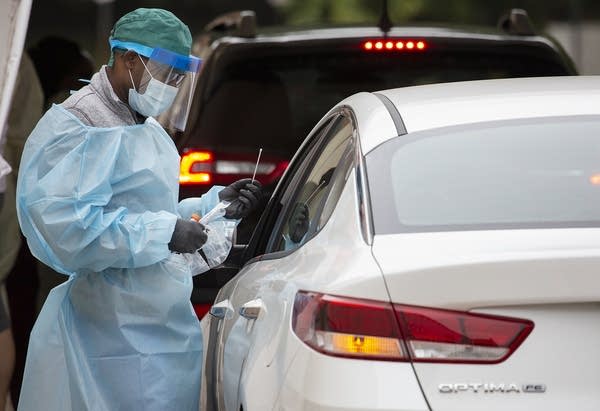
Updated: 12:05 p.m.
Minnesota health officials reported a daily record for new COVID-19 cases on Saturday, with the 924 additional confirmed cases pushing the statewide total past 60,000.
That’s as the state saw eight more deaths from COVID-19, and the number of Minnesotans hospitalized with the disease remained at or above 300 for the ninth straight day.
The spike in cases in Saturday’s report from the Minnesota Department of Health was spread across all regions of the state. It accompanied a lesser increase in completed tests; the percentage of positive tests for the day climbed back about 5 percent.
The deaths reported Saturday included four residents of long-term care facilities, and three people who lived in group homes.
Create a More Connected Minnesota
MPR News is your trusted resource for the news you need. With your support, MPR News brings accessible, courageous journalism and authentic conversation to everyone - free of paywalls and barriers. Your gift makes a difference.
Hospitalizations rose to 309 in Saturday’s report, up from 300 on Friday. About half of those patients were being treated in ICUs.
State health officials have said that positive tests reported on a given day usually are the result of transmission that happened two to three weeks previously.
Saturday marks two weeks since Minnesota’s mask mandate — requiring the wearing of face coverings in indoor public places — took effect. Given the lag time in detecting cases, state health officials have said it could take at least 21 days from the start of the mandate, to determine whether it is affecting the spread of the coronavirus in the state.
Meanwhile, officials in recent days have also warned that Minnesotans are backsliding in their efforts to stem COVID-19 as the disease ripples through communities, fed by people returning to public spaces.
That’s a constant worry now among the state’s public health experts, who’ve been stressing all week that hard-won gains over the disease are in danger. And they’ve made it clear that the massive motorcycle rally underway now in Sturgis, S.D., could make things worse.
“Nobody likes to tell people they shouldn't go out and have fun and live their lives. But the hard truth is we are in a historic pandemic,” Minnesota Health Commissioner Jan Malcolm said Friday of the Black Hills rally.
“We have big problems in Minnesota, and in the United States, with community transmission — and the idea of bringing together tens and hundreds of thousands of people from all around the country in close contact for days at a time does raise significant concerns.”
Malcolm and other experts have urged Minnesotans going to Sturgis to self-isolate for 14 days after they get back home.
Here are the latest COVID-19 statistics:
60,101 cases confirmed (924 new) via 1,138,595 tests
1,648 deaths (8 new)
5,506 cases requiring hospitalization
309 people remain hospitalized; 154 in intensive care
52,768 patients no longer requiring isolation
Two closely watched metrics — people currently hospitalized and those needing intensive care — have generally flattened after climbing in recent weeks, although Saturday marked the ninth straight day with 300 or more people still hospitalized, the first time that’s happened since late June.
While current hospitalizations remain far lower than their late-May peak, they’ve shown an upward swing the past few weeks even as the daily growth in new cases flattened.
‘Fragile’ progress at risk
Despite the relatively good numbers, officials on Friday raised fresh worries about long-term care facilities, the epicenter for most of Minnesota’s COVID-19 deaths.
In early May, Gov. Tim Walz unveiled a “battle plan” to safeguard Minnesotans living in long-term care facilities, including expanded testing and a promise of “adequate” staffing when workers fall ill. It helped drive down daily death counts to mostly single digits the past six weeks.
Now, though, officials worry those gains may slip away as COVID-19 ripples across the state.
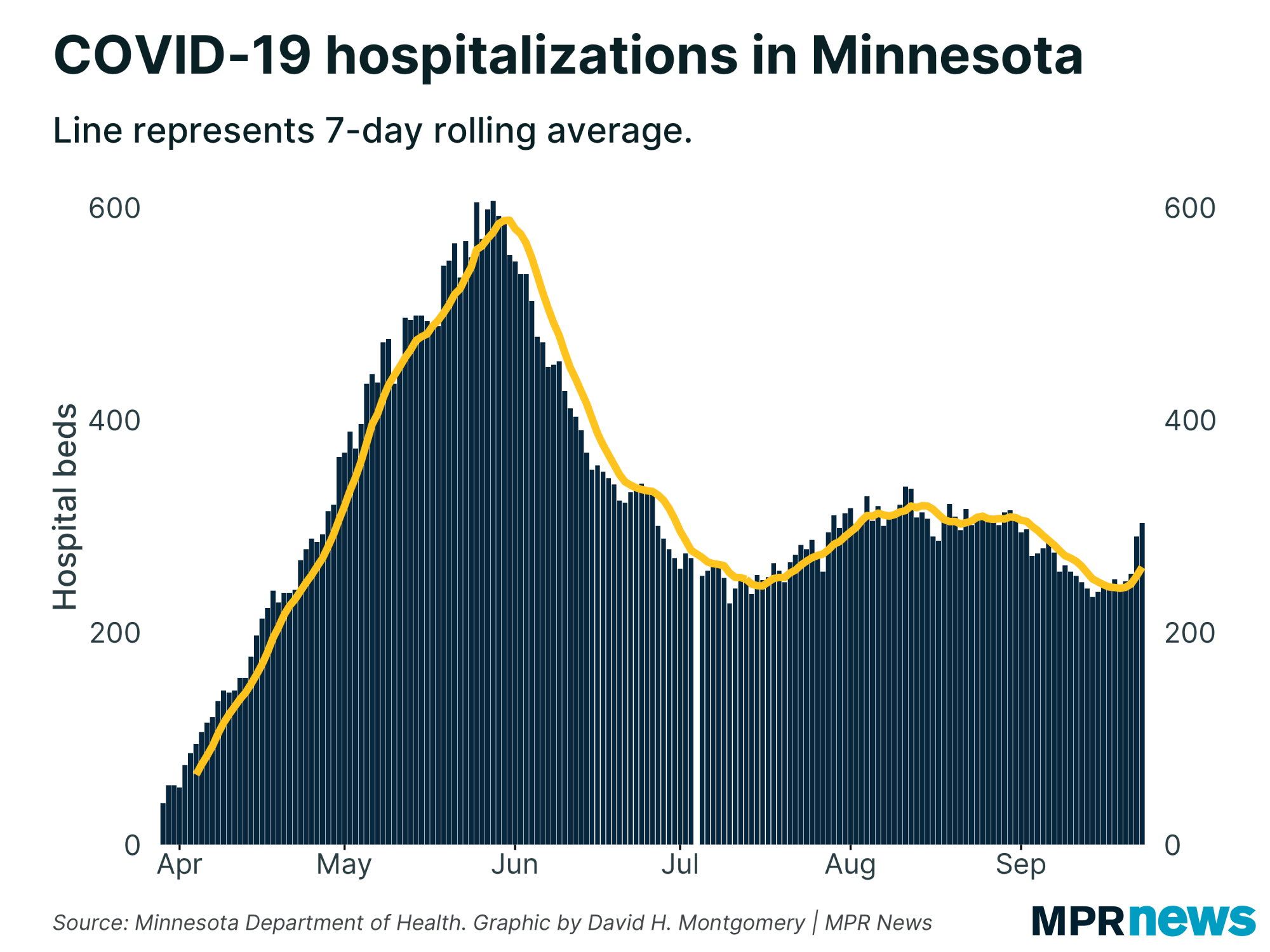
They say they’re seeing new cases tied to long-term care facilities that they believe are being driven largely by community spread and brought in inadvertently by facility staff as restrictions on daily life loosen and people return to indoor gathering spaces and attend family events.
“The staff are clearly having more exposures in the community than in the facilities themselves,” said Dr. Ruth Lynfield, the state’s epidemiologist.
She urged people to stay vigilant against the spread of the disease — wearing masks in indoor gathering places, social distancing and washing hands — and warned that the work to limit spread among vulnerable populations was at risk.
“This is fragile and we are very concerned that the progress we have made can be at risk, and can even be lost, if we let up on our precautions,” she said. “We need everyone in Minnesota to be doing their part to limit transmission. We are all connected to each other.”
Cases bubble up across age brackets, up north
Worries remain about the growth of COVID-19 among younger Minnesotans, including that those infected will inadvertently spread the virus to grandparents and other more vulnerable people.
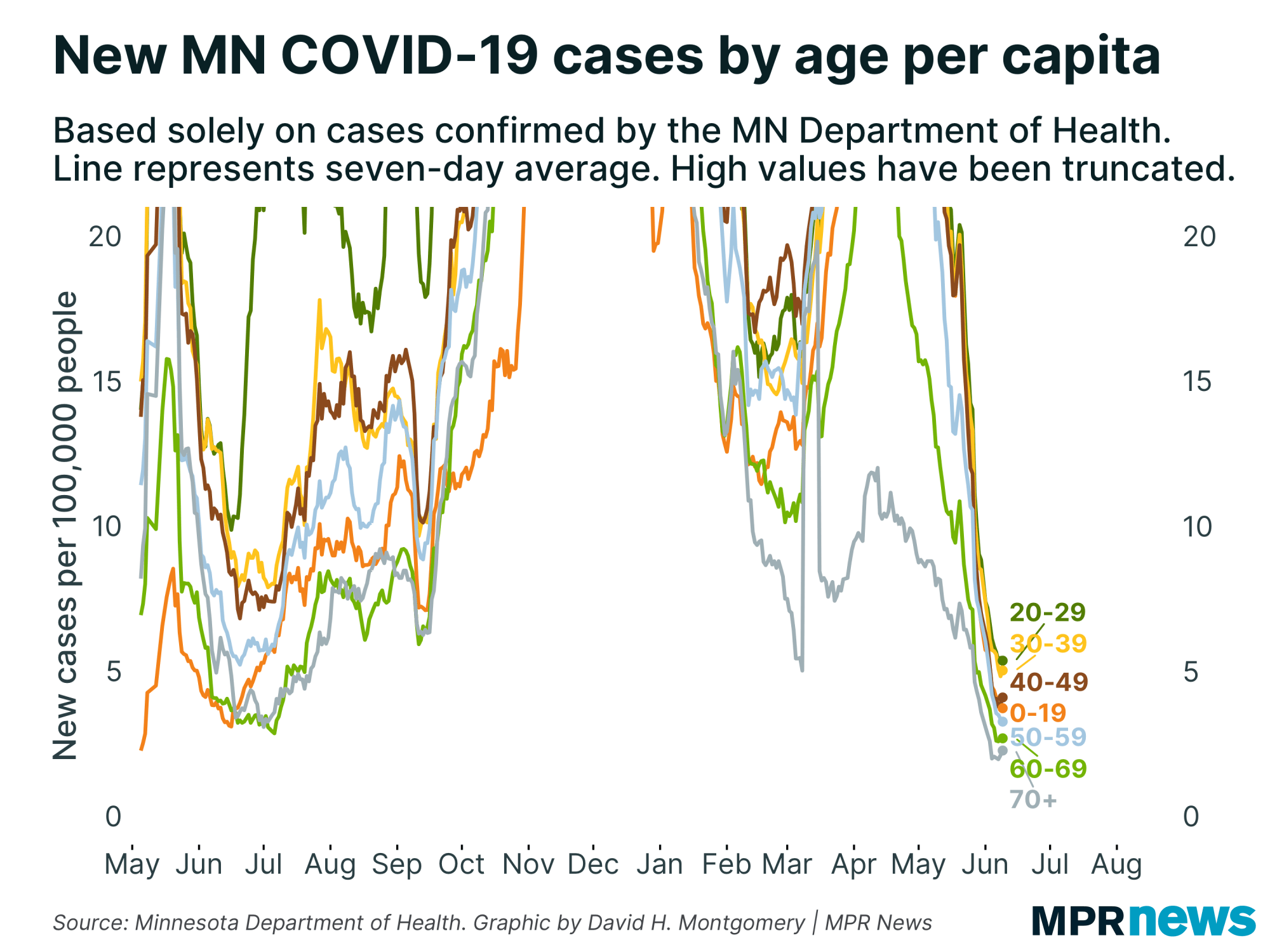
Minnesotans in their 20s now make up the age group with the most confirmed cases in the pandemic — more than 14,000. The median age of Minnesotans infected has been trending down in recent weeks and is now 36 years old.
Regionally, the Twin Cities and its suburbs have been driving the counts of newly reported cases. But the disease is present in all parts of the state, including the north, which had largely avoided the outbreak until recently.
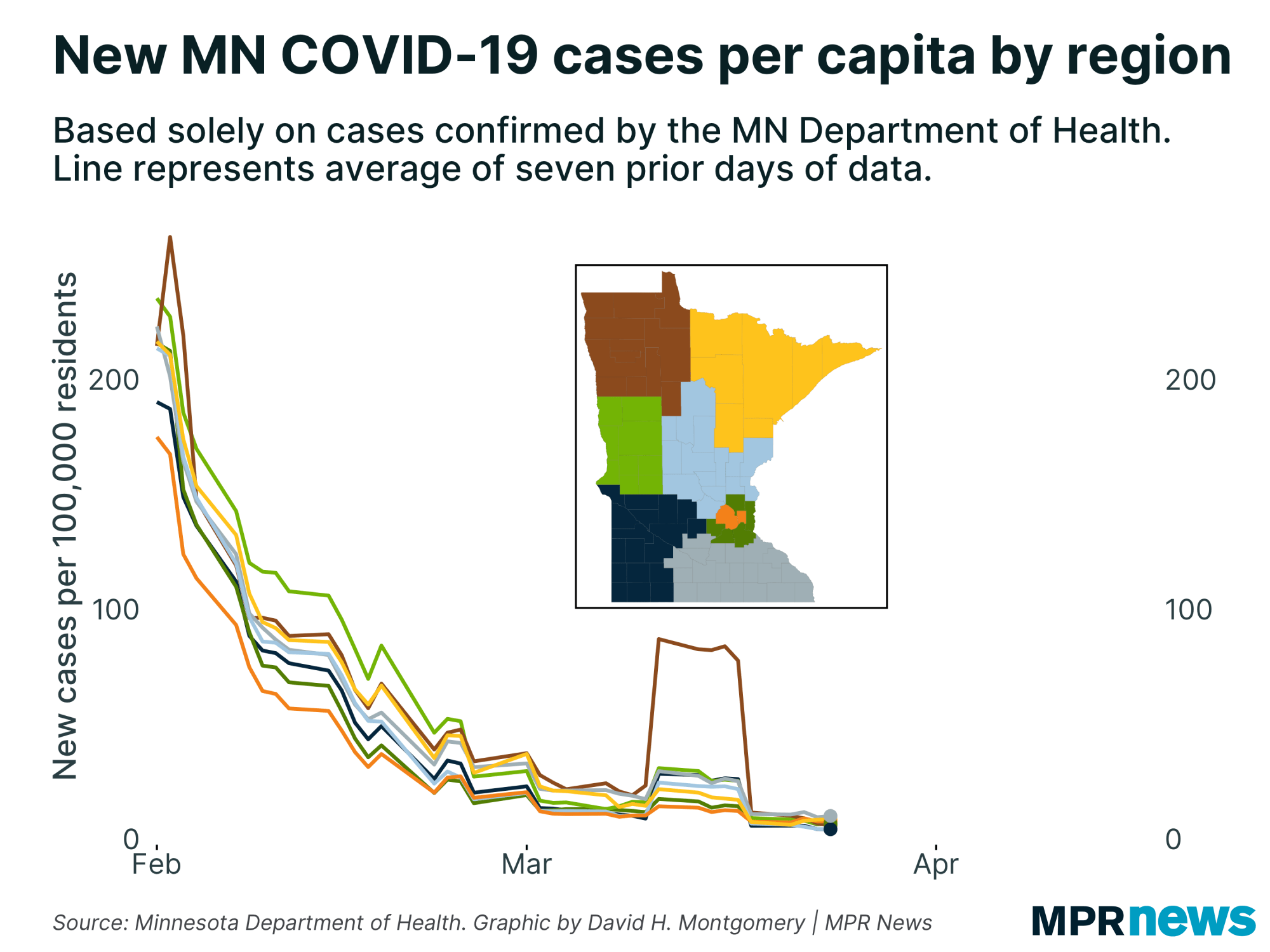
Many of the state’s fastest-growing outbreaks relative to population are in northern Minnesota.
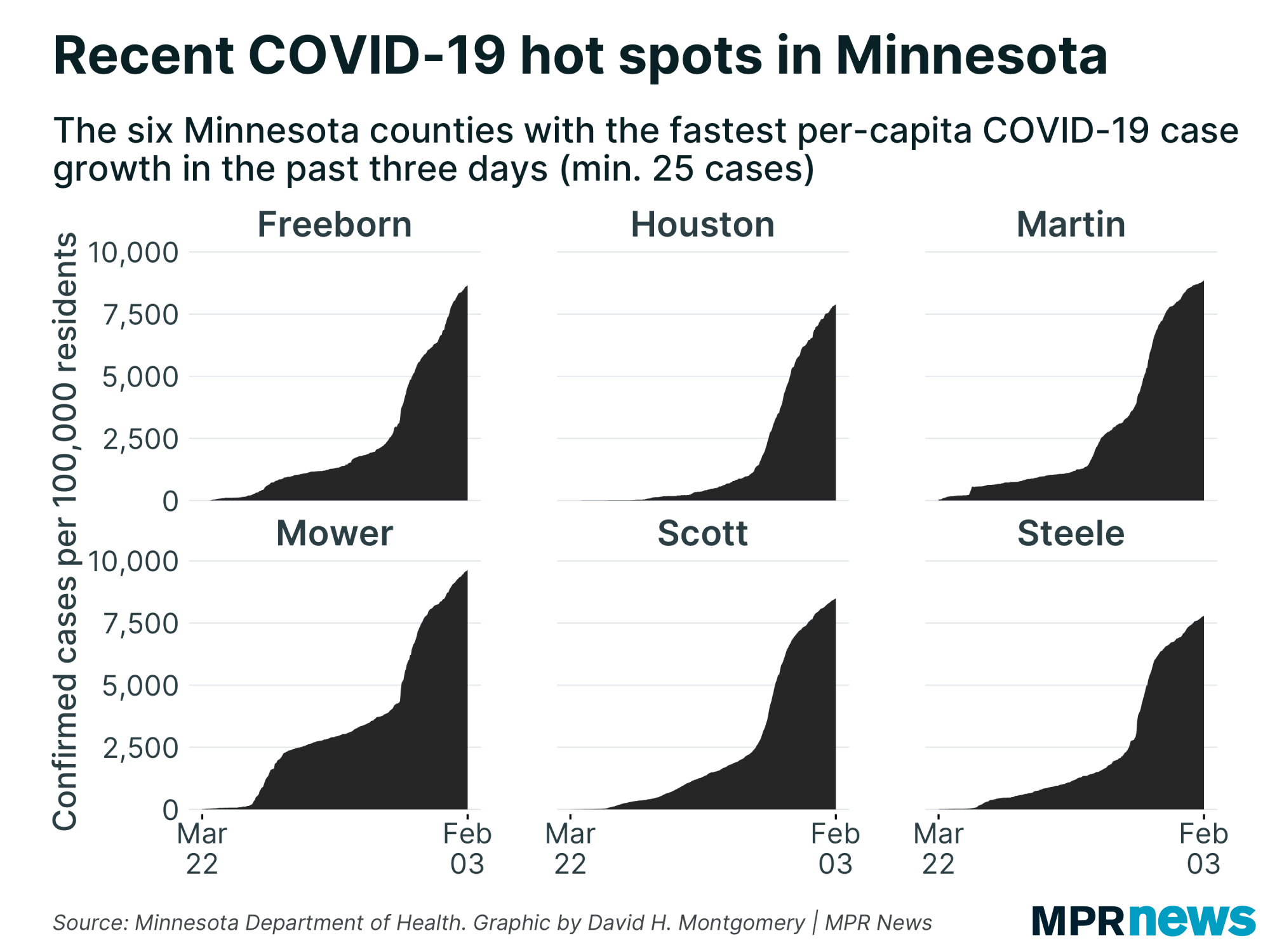
Meatpacking operations had been hot spots for big outbreaks in southwest, west-central and central Minnesota earlier in the pandemic, but new cases have slowed considerably in recent weeks.
Sturgis spread?
Malcolm and other state public health leaders have warned all week that Sturgis, which runs through Aug. 16, could be a potential petri dish for spreading the virus here and across the nation.
The event is expected to attract more than 250,000 riders and their friends from around the country to the Black Hills.
Malcolm on Friday said self-isolating for 14 days after Sturgis was especially important for people who work with seniors or other populations highly vulnerable to COVID-19.
“Too many people have already gotten very sick and have unfortunately died of this disease in our state,” she said. “We don't want to see any more.”
Developments from around the state
School guidance shifting with case counts
State health officials last week said they’d use county-level COVID-19 data as the starting point to help school districts decide whether to bring kids back into their buildings this fall. Newly updated data, though, is already altering the landscape.
Fresh numbers released Thursday by the Minnesota Department of Health have changed the guidance for school reopening in 27 counties — if the school year started today.

Rising COVID-19 caseloads mean schools in seven counties are recommended to use more distance learning than the original recommendations issued last week.
For example, Sherburne County last week reported 15.8 cases per 10,000 residents over a 14-day period, which meant the state recommended its schools have in-person education for grade schoolers and a mix of in-person and distance learning for secondary students.
An extra week of rising cases, however, brought Sherburne up to 23.3 cases per 10,000 residents over 14 days — which brings a recommendation of hybrid learning for all students.
The other six counties to see their reopening recommendations downgraded were Faribault, Martin, Norman, Red Lake and Rock counties.
In 20 counties, falling case counts mean a change in recommendation for the better in terms of bringing kids back to buildings.
Carver County, for example, fell from 20.8 cases per 10,000 residents over 14 days last week to 17.9 this week, moving it from hybrid learning for all students to in-person learning for elementary school.
These metrics, based on COVID-19 cases, form the starting point as districts and the Health Department negotiate specific learning models for each district.
The case figures fueling these recommendations are somewhat out of date, because of how the agency is calculating its numbers.
The recommendations releases Thursday are based on case data from between July 12 and July 25, while next week will see updated data based on cases from July 19 to Aug. 1.
— David H. Montgomery | MPR News
3rd special session kicks off Wednesday
Gov. Tim Walz has called a special legislative session for Wednesday, the third one of the summer, to extend his peacetime emergency around the coronavirus pandemic for a fifth time and another 30 days.
State law requires him to call a session so lawmakers can debate whether to revoke his authority. With control of the Legislature split between parties, it’s unlikely the DFL governor’s action will be overturned.
Although several measures remain unresolved from the two prior special sessions, there is not expected to be movement on budget changes or a construction borrowing package. That should make for an in-and-out session instead of the several-day affairs that occurred in June and July.
— Brian Bakst | MPR News
Gas tax revenue skids as driving drops
COVID-19’s impact on a key source of Minnesota road construction funding is becoming more apparent. Gas tax revenues for the past five months were $50 million, or 14 percent, below a February estimate of what would come in over that time.
That matters because the tax revenues are dedicated to highway-related expenses, including paying off debt for construction. May saw the steepest drop-off, with revenue compared to projections falling off by about $21 million, or almost 30 percent.
If there’s a bright spot, it’s that June and July gas tax revenues weren’t down as severely as the preceding months.
Last month, the state came within $5 million of hitting the estimates from prior to the COVID-19 societal shakeup. Traffic volumes plummeted during the early days of the coronavirus response and the stay-at-home orders.
The Minnesota Department of Transportation estimates that traffic has nearly rebounded to historical averages in recent weeks. Traffic volume in some parts of the state is now above the three-year baseline.
— Brian Bakst | MPR News
Top headlines
Many Minnesota teachers wary of returning to the classroom: As more school districts in Minnesota decide how to go back to school this fall, many teachers feel uneasy about returning to the classroom in the middle of a pandemic.
Exempt from COVID-19 guidance, some Minnesota private schools are seeing a surge in applicants: Many independent and faith-based schools are offering face-to-face instruction this fall when their public school neighbors cannot.
St. Paul to start school year with distance learning; St. Cloud eyes hybrid plan: The St. Paul district says it will revisit the decision in late September. St. Cloud’s school board is expected to vote on the superintendent’s recommendation on Aug. 19.
After taking tough measures, Fond du Lac band has first COVID-19 cases: After months of trying to keep the coronavirus at bay, the Fond du Lac Band of Lake Superior Chippewa has confirmed the first two positive COVID-19 cases on its reservation in northeastern Minnesota.
COVID-19 in Minnesota
Data in these graphs are based off Minnesota Department of Health cumulative totals released at 11 a.m. daily. You can find more detailed statistics on COVID-19 at the Health Department website.
The coronavirus is transmitted through respiratory droplets, coughs and sneezes, similar to the way the flu can spread.